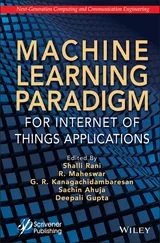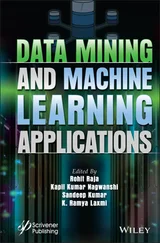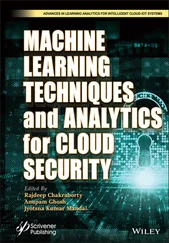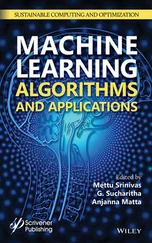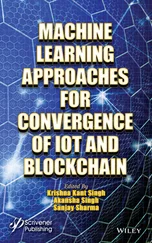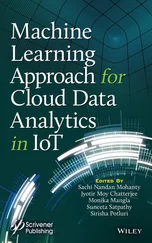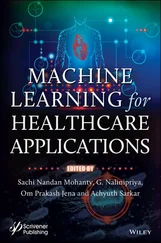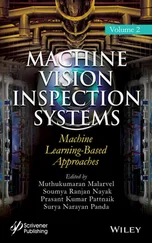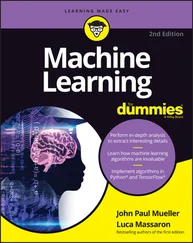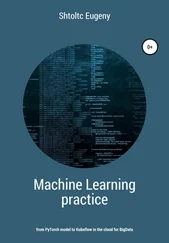1 Cover
2 Title Page
3 Introduction Introduction Time series data is an important source of information used for future decision making, strategy, and planning operations in different industries: from marketing and finance to education, healthcare, and robotics. In the past few decades, machine learning model-based forecasting has also become a very popular tool in the private and public sectors. Currently, most of the resources and tutorials for machine learning model-based time series forecasting generally fall into two categories: code demonstration repo for certain specific forecasting scenarios, without conceptual details, and academic-style explanations of the theory behind forecasting and mathematical formula. Both of these approaches are very helpful for learning purposes, and I highly recommend using those resources if you are interested in understanding the math behind theoretical hypotheses. This book fills that gap: in order to solve real business problems, it is essential to have a systematic and well-structured forecasting framework that data scientists can use as a guideline and apply to real-world data science scenarios. The purpose of this hands-on book is to walk you through the core steps of a practical model development framework for building, training, evaluating, and deploying your time series forecasting models. The first part of the book ( Chapters 1 and 2 ) is dedicated to the conceptual introduction of time series, where you can learn the essential aspects of time series representations, modeling, and forecasting. In the second part ( Chapters 3 through 6 ), we dive into autoregressive and automated methods for forecasting time series data, such as moving average, autoregressive integrated moving average, and automated machine learning for time series data. I then introduce neural networks for time series forecasting, focusing on concepts such as recurrent neural networks (RNNs) and the comparison of different RNN units. Finally, I guide you through the most important steps of model deployment and operationalization on Azure. Along the way, I show at practice how these models can be applied to real-world data science scenarios by providing examples and using a variety of open-source Python packages and Azure. With these guidelines in mind, you should be ready to deal with time series data in your everyday work and select the right tools to analyze it.
What Does This Book Cover? Reader Support for This Book
4 CHAPTER 1: Overview of Time Series Forecasting Flavors of Machine Learning for Time Series Forecasting Supervised Learning for Time Series Forecasting Python for Time Series Forecasting Experimental Setup for Time Series Forecasting Conclusion
5 CHAPTER 2: How to Design an End-to-End Time Series Forecasting Solution on the Cloud Time Series Forecasting Template An Overview of Demand Forecasting Modeling Techniques Use Case: Demand Forecasting Conclusion
6 CHAPTER 3: Time Series Data Preparation Python for Time Series Data Time Series Exploration and Understanding Time Series Feature Engineering Conclusion
7 CHAPTER 4: Introduction to Autoregressive and Automated Methods for Time Series Forecasting Autoregression Moving Average Autoregressive Moving Average Autoregressive Integrated Moving Average Automated Machine Learning Conclusion
8 CHAPTER 5: Introduction to Neural Networks for Time Series Forecasting Reasons to Add Deep Learning to Your Time Series Toolkit Recurrent Neural Networks for Time Series Forecasting How to Develop GRUs and LSTMs for Time Series Forecasting Conclusion
9 CHAPTER 6: Model Deployment for Time Series Forecasting Experimental Set Up and Introduction to Azure Machine Learning SDK for Python Machine Learning Model Deployment Solution Architecture for Time Series Forecasting with Deployment Examples Conclusion
10 References
11 Index
12 Copyright
13 About the Author
14 About the Technical Editor
15 Acknowledgments
16 End User License Agreement
1 Chapter 2Table 2.1: Examples of compute targets that can be used to host your web servi...Table 2.2: Short-term versus long-term predictions
2 Chapter 3Table 3.1: Four general time-related concepts supported in pandasTable 3.2: Comparison of strftime()and strptime()functionalitiesTable 3.3: Date and time properties from Timestampand DatetimeIndexTable 3.4: Offset aliases supported in Python
3 Chapter 4Table 4.1: pandas.plotting.lag_plot API reference and descriptionTable 4.2: pandas.plotting.lag_plot API reference and descriptionTable 4.3: Autoregressive class in statsmodelsTable 4.4: Definition and parameters of autoregressive class in statsmodelsTable 4.5: Autoregressive moving average in statsmodelsTable 4.6: Definition and parameters of autoregressive moving average class in...Table 4.7: Seasonal auto regressive integrated moving average with exogenous f...Table 4.8: Definition and parameters of seasonal auto regressive integrated mo...Table 4.9: Automated ML parameters to be configured with the AutoML Config cla...
4 Chapter 5Table 5.1: Key differences between machine learning and deep learning
5 Chapter 6Table 6.1: Creating a deployment configuration for each compute target
1 Chapter 1 Figure 1.1: Example of time series forecasting applied to the energy load us... Figure 1.2: Machine learning data set versus time series data set Figure 1.3: Difference between time series analysis historical input data an... Figure 1.4: Components of time series Figure 1.5: Differences between cyclic variations versus seasonal variations... Figure 1.6: Actual representation of time series components Figure 1.7: Handling missing data Figure 1.8: Time series data set as supervised learning problem Figure 1.9: Multivariate time series as supervised learning problem Figure 1.10: Univariate time series as multi-step supervised learning
2 Chapter 2 Figure 2.1: Time series forecasting template Figure 2.2: Time series batch data processing architecture Figure 2.3: Real-time and streaming data processing architectureFigure 2.4: Understanding time series featuresFigure 2.5: A representation of data set splitsFigure 2.6: Machine learning model workflowFigure 2.7: Energy demand forecast end-to-end solution
3 Chapter 3Figure 3.1: Overview of Python libraries for time series dataFigure 3.2: Time series decomposition plot for the load data set (time range...Figure 3.3: Time series load value and trend decomposition plot
4 Chapter 4Figure 4.1: First order autoregression approachFigure 4.2: Second order autoregression approachFigure 4.3: Lag plot results from ts_data_load setFigure 4.4: Autocorrelation plot results from ts_data_load setFigure 4.5: Autocorrelation plot results from ts_data_load_subsetFigure 4.6: Autocorrelation plot results from ts_data_load set with plot_acf...Figure 4.7: Autocorrelation plot results from ts_data_load_subset with plot_...Figure 4.8: Autocorrelation plot results from ts_data set with plot_pacf()f...Figure 4.9: Autocorrelation plot results from ts_data_load_subset with plot_...Figure 4.10: Forecast plot generated from ts_data set with plot_predict()fu...Figure 4.11: Visualizations generated from ts_data set with plot_diagnositcs...
5 Chapter 5Figure 5.1: Representation of a recurrent neural network unitFigure 5.2: Recurrent neural network architectureFigure 5.3: Back propagation process in recurrent neural networks to compute...Figure 5.4: Backpropagation process in recurrent neural networks to compute ...Figure 5.5: Transforming time series data into two tensorsFigure 5.6: Transforming time series data into two tensors for a univariate ...Figure 5.7: Ts_data_load train, validation, and test data sets plotFigure 5.8: Data preparation steps for the ts_data_load train data setFigure 5.9: Development of deep learning models in KerasFigure 5.10: Structure of a simple RNN model to be implemented with KerasFigure 5.11: Structure of a simple RNN model to be implemented with KerasFigure 5.12: Structure of a simple RNN model to be implemented with Keras fo...
Читать дальше

